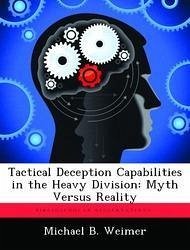Nicht lieferbar

Putting Armor Back into the 82nd Airborne Division: Revisiting the AGS Decision
Versandkostenfrei!
Nicht lieferbar
The Army Times has reported that the Chief of Staff of the Army, General Peter Schoomaker, has directed the army to pursue more effective organizational structures. Since that is the case, now is the perfect time to revisit the decision to remove armor from the 82nd Airborne Division. While much has been written in the last ten years on the topic of heavy/light integration in general, and specifically on the armor requirements of an airborne forcible entry operation, the literature available does not agree on the impact and implications of the mid-1990s decision to cancel the Armored Gun Syste...
The Army Times has reported that the Chief of Staff of the Army, General Peter Schoomaker, has directed the army to pursue more effective organizational structures. Since that is the case, now is the perfect time to revisit the decision to remove armor from the 82nd Airborne Division. While much has been written in the last ten years on the topic of heavy/light integration in general, and specifically on the armor requirements of an airborne forcible entry operation, the literature available does not agree on the impact and implications of the mid-1990s decision to cancel the Armored Gun System Program and inactivate the 82nd 's airborne armor battalion. This division has been in combat on two occasions since. These occasions provide the opportunity to validate or invalidate the AGS decision. This study examines strategic documents, joint and army doctrine, and observations from recent operations in Afghanistan and Iraq to determine if a need exists to return organic armor assets to the 82nd Airborne Division. This study concludes that while we cannot predict whether future warfare will be more like Operation Enduring Freedom or Iraqi Freedom, the doctrinal requirement for forces to be strategically responsive and the Chief of Staff of the Army 's demand for modularity are intended to address this uncertainty and demand the reintegration of armor forces not only into the 82nd Airborne Division, but into all conventional light forces as well. By analyzing the experiences of light forces in both OEF and OIF based on the attributes of strategically responsive forces (responsive, deployable, agile, versatile, lethal, survivable, and sustainable), it is clear that redesigning the 82nd Airborne Division 's force structure would increase its strategic responsiveness and broaden the options of the Joint Force Commander. Based on these findings, it is recommended that the 82nd Airborne Division immediately field the four remaining Armored Gun Systems as the first step to in







